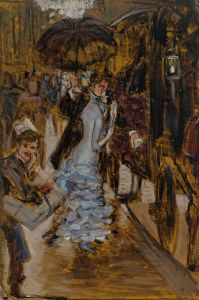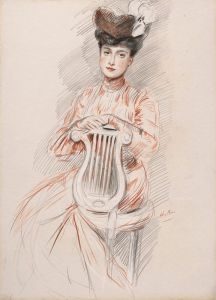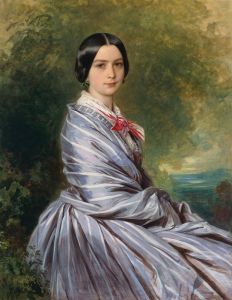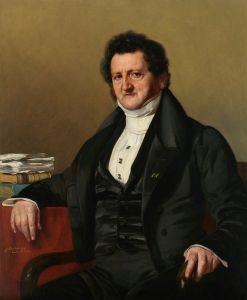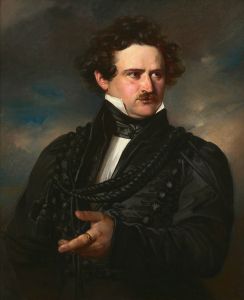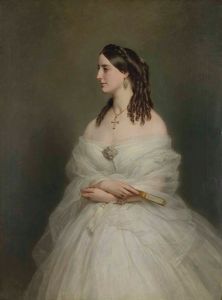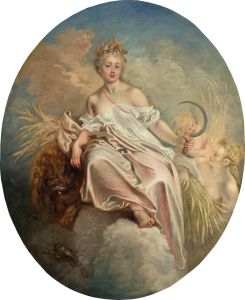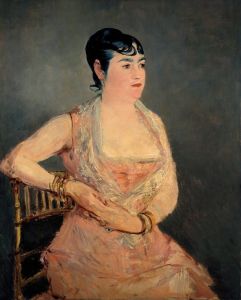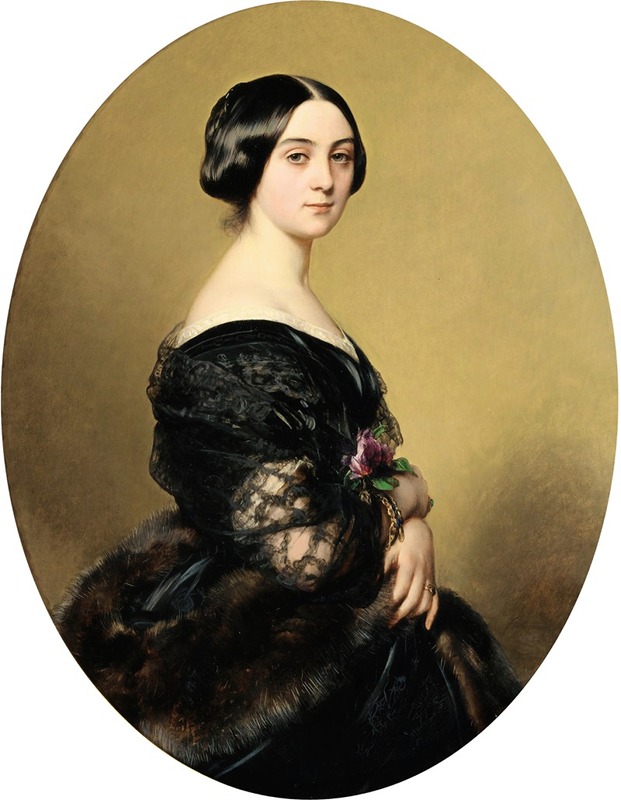
Portrait de la Baronne Henri Hottinguer, née Caroline Delessert
A hand-painted replica of Franz Xaver Winterhalter’s masterpiece Portrait de la Baronne Henri Hottinguer, née Caroline Delessert, meticulously crafted by professional artists to capture the true essence of the original. Each piece is created with museum-quality canvas and rare mineral pigments, carefully painted by experienced artists with delicate brushstrokes and rich, layered colors to perfectly recreate the texture of the original artwork. Unlike machine-printed reproductions, this hand-painted version brings the painting to life, infused with the artist’s emotions and skill in every stroke. Whether for personal collection or home decoration, it instantly elevates the artistic atmosphere of any space.
Franz Xaver Winterhalter was a renowned 19th-century German painter, celebrated for his portraits of royalty and high society across Europe. One of his notable works is the "Portrait de la Baronne Henri Hottinguer, née Caroline Delessert," which exemplifies his skill in capturing the elegance and sophistication of his subjects.
Caroline Delessert, later known as Baronne Henri Hottinguer, was a member of the prominent Delessert family, known for their influence in banking and industry in France. The Delesserts were well-connected in social and cultural circles, which likely facilitated the commissioning of a portrait by an artist of Winterhalter's stature. The Hottinguer family, into which Caroline married, was also a distinguished banking family, further cementing her status in high society.
Winterhalter's portrait of Caroline Delessert is a testament to his ability to convey the grace and poise of his sitters. Known for his flattering style, Winterhalter often employed a soft focus and delicate brushwork to enhance the beauty and refinement of his subjects. This particular portrait is no exception, showcasing his characteristic attention to detail and his talent for rendering luxurious fabrics and textures.
The painting captures Caroline Delessert in a poised and elegant manner, reflecting the fashion and aesthetics of the mid-19th century. Winterhalter was adept at portraying the intricate details of his subjects' attire, often highlighting the sumptuousness of their garments. In this portrait, the Baronne is depicted wearing an exquisite gown, likely made of silk or satin, with intricate lace and embroidery, which was typical of the period's fashion for the elite.
Winterhalter's portraits were highly sought after by the aristocracy and bourgeoisie, as they not only captured the likeness of the individual but also conveyed a sense of their social status and personality. His works were characterized by a sense of idealization, often presenting his subjects in an idealized light that emphasized their elegance and sophistication.
The "Portrait de la Baronne Henri Hottinguer, née Caroline Delessert" is a fine example of Winterhalter's work during a period when he was at the height of his career. His ability to blend realism with idealization made his portraits highly desirable among the European elite, and his reputation as a portraitist of choice for royalty and nobility was well established.
Winterhalter's legacy as a portrait artist is marked by his ability to capture the essence of 19th-century high society. His works remain appreciated for their technical skill and their ability to convey the opulence and refinement of his subjects. The portrait of Caroline Delessert is a reflection of both the artist's talent and the cultural milieu of the time, offering a glimpse into the world of European aristocracy during the 1800s.
Today, Winterhalter's portraits, including that of Baronne Henri Hottinguer, are held in high regard and can be found in various prestigious collections and museums. They continue to be studied and admired for their artistic merit and historical significance, providing insight into the fashion, culture, and social dynamics of the 19th century.





